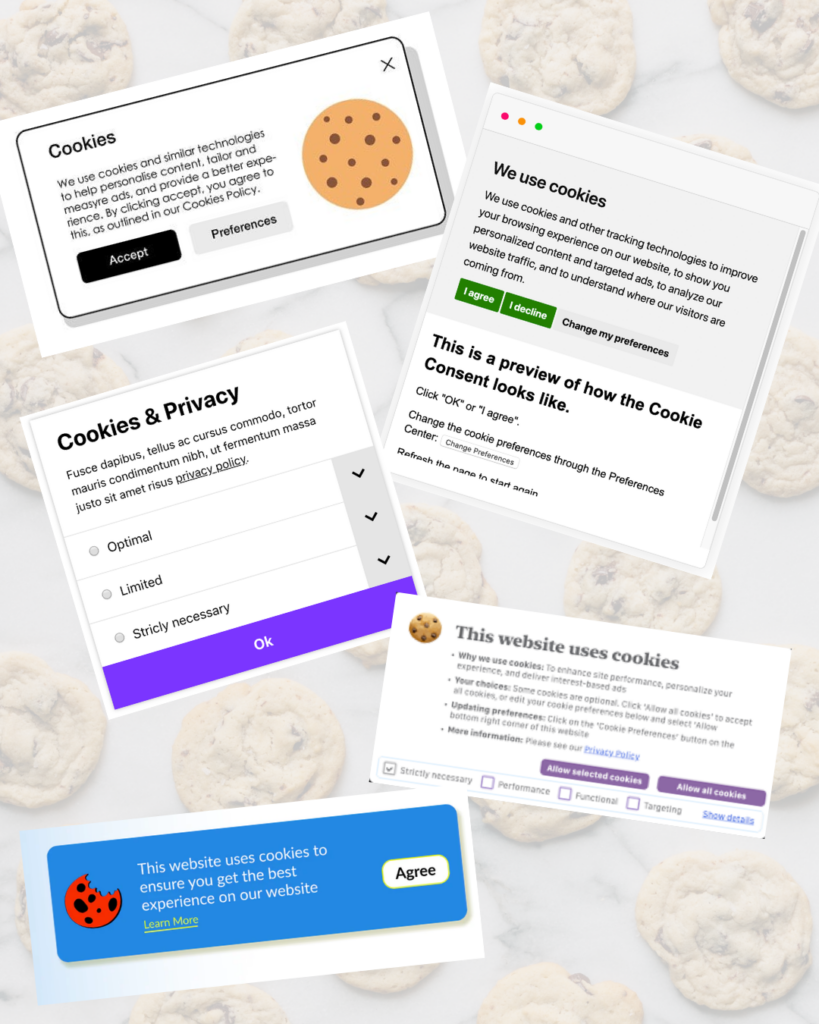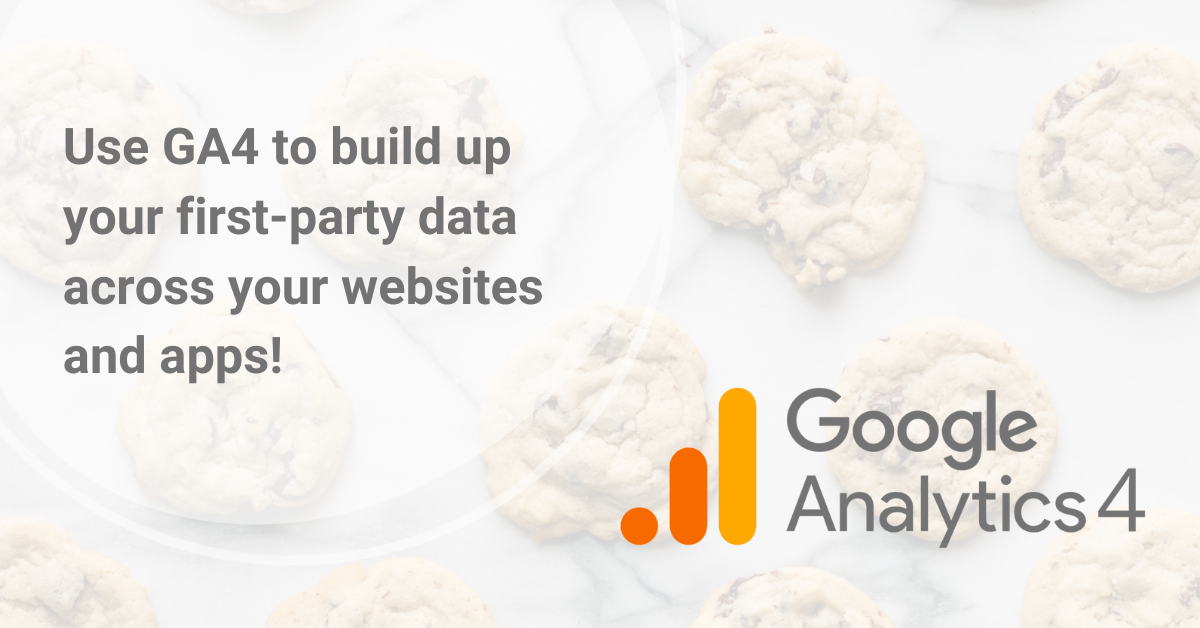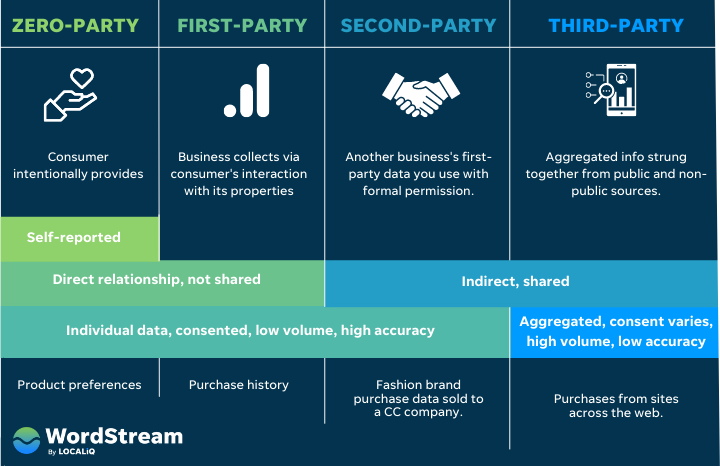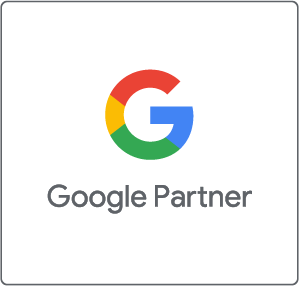If you’re a business owner or marketer, abandoning cookies will hugely impact how you engage with your audience and target your ads.
So let’s take a closer look why cookies are ‘disappearing’, what this change means to you and what you can do to adapt to this change effectively.
What Are Cookies?
Cookies are small files that websites place on your computer or device to store information about your preferences. They have been the backbone of digital marketing for years, enabling companies to track user behaviour, personalise experiences, deliver targeted ads as well as run retargeting campaigns.
Before we dive even deeper its important to clarify the different types of cookies. There are zero, first, second and third-party cookies. All cookies except third-party cookies include a level of user permission to gather and use the data. When it comes to third-party data, consumer consent is indirect, blurring the lines of privacy which is the key concern with using cookies.
Why Are Cookies Being Phased Out?
The move away from cookies is driven by several key factors:
- Consumer Demand for Data Control
Today’s consumers want more say over their personal data. They value their privacy and are increasingly wary of being tracked across the internet
- Regulatory Changes
Global regulations such as GDPR and CCPA have heightened data protection measures, forcing businesses to reconsider their data collection practices.
- Tech Giants’ Policies
Industry giants like Apple and Google are adapting their policies to align with consumer preferences and regulatory requirements. For example, Apple’s Intelligent Tracking Prevention (ITP) blocked third-party cookies by default.
Implications for Businesses and Advertisers
As cookies are phased out, it’s crucial to understand the implications for your business. Whether it’s the loss of valuable data or the search for alternative tracking methods, every business needs to adapt to remain competitive in the digital arena:
- Loss of Data
You’ll lose the ability to track users across different websites, making it challenging to measure the effectiveness of your marketing campaigns. This means that marketers should change their plans and rely less on third-party cookies for targeting and retargeting ads.
- Increased Costs
Adapting to a cookieless environment may require investments in new technologies and processes for user tracking.
Moreover, if the brand doesn’t find new ways to bridge data gaps before cookies phase out, advertising costs will rise. This is because ad platforms will have less user information, making it more expensive to target the right customers.
- Privacy Concerns
Finally, with increased attention on this subject, users may be more concerned about their privacy, potentially leading to reduced engagement with ads.

Navigating the Transition
It’s not all doom and gloom! Here are some practical tips on how you can manage the transition to a cookieless world:
- Embrace First-Party Data
In the cookieless future, first-party data will be your most valuable asset. This data is collected directly from your website and apps, providing insights into browsing behaviour, content consumption, location, and more.
To make the most of this data, you should set up a robust system to track events on your websites and apps. A great way to do this is by using Google Analytics 4 (GA4). GA4 is a powerful event-based tracking system developed by Google. If you’re unsure about tracking every click, event, and page on your site, don’t hesitate to contact us for assistance with web analytics tracking setup. Properly configuring GA4 to gather first-party event data is crucial for success in a cookieless world and we are here to help you leverage it!

- Centralise Your Data
Make sure that your first-party data is centralised and easily accessible throughout your organisation. Establishing internal data connections is essential to unlock its full potential. In practical terms, this involves integrating your web data with your CRM and advertising platforms, creating a unified pool of information.
- Transparency and Trust
Build trust with your audience by being transparent about data collection and usage. When consumers understand the value of sharing data, they are more likely to opt in. Consider sending a newsletter or posting about it on social media as by the start of 2024 the transition to cookie-less tracking is bound to be a hot topic!
- Explore New Targeting Tactics
With third-party cookies gone, consider alternative targeting methods like addressable targeting (with user consent), contextual advertising, and cohort-based targeting (still evolving). Read below more about these advertising tactics below:
Addressable targeting is a marketing strategy where you send customized ads to individuals or groups who have willingly shared their data with you. To adapt to the cookie-less future, marketers are increasingly focusing on collecting their own customer data before third-party cookies disappear.
An example of addressable marketing would be leveraging your first-party data (e.g. uploading customer match lists to Google Ads), as well as advertising on social media or utilising email marketing.
Contextual advertising is a method that doesn’t rely on tracking user data through third-party cookies. Instead, it focuses on showing ads based on the content that a user is currently viewing on a website.
For instance, if you’re reading a travel blog about Paris, you might see ads for flights to Paris and hotel deals in the city. This is a prime example of contextual advertising in action and it can be arranged without third-party cookies!
This is a new approach that’s still being developed, especially in Google Chrome. It groups people based on shared interests or traits for targeted advertising. While the details are not clear yet, it could provide marketers with fresh ways to reach their target audiences.
Our Verdict
The cookieless future is a challenge, but it’s also an opportunity to forge stronger relationships with your audience. By focusing on first-party data, transparency, and innovative targeting tactics, you can thrive in the evolving digital marketing landscape. Prepare now, and you’ll be ahead of the curve when the cookie ban takes full effect in 2024.




